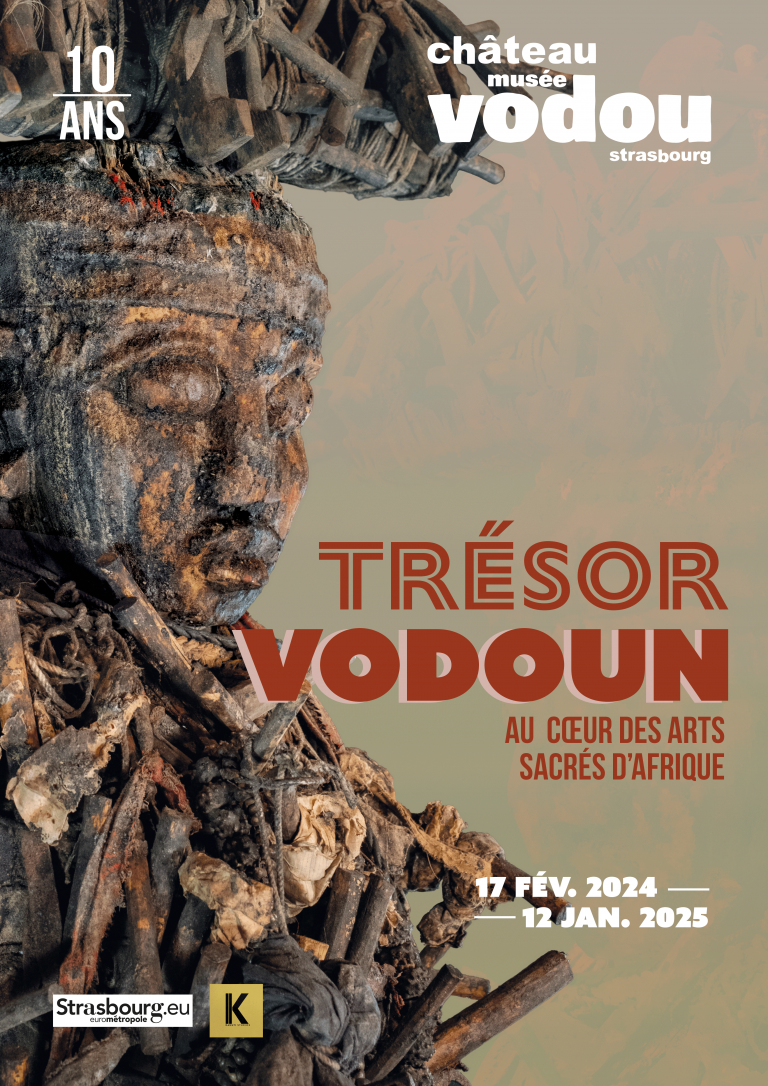Encounter with the invisible world
Unique world collection
OPENING TIMES
Everyday from 2 pm to 6 pm
—
Groups : 9 am-9 pm, booking required 10 days in advance.
The Château Vodou is a privately-owned and charity-run museum boasting the largest collection of western-African vodou objects in the world. To add to the visitor’s delight, the museum’s permanent collection is on display in a gloriously original water tower dating back to 1878.
Far from the clichés, Vodou is first and foremost a religion originating in West-Africa. It embraces a large spectrum of practices and beliefs, the aim being to maintain harmony between the visible and the invisible worlds. It provides a framework for key moments in life and seeks to cure sickness.
This is but a mere introduction, there is so much more to tell! Come and visit us in Strasbourg and discover Hebieso (the god of thunder), Mami Wata (the goddess of the ocean), Aguin (the spirit of the savanna) and all the other deities of the vodou pantheon.
* Suitable for a younger audience
The term “Vodou” is spelled “Vodoun” in Benin, “Vaudou” in Haiti, and “Voodoo” in Louisiana, where it is still practised. These different names reflect the different traditions that have developed locally. Today, specialists believe there are an estimated 200 million practitioners of Vodou worldwide, taking into account all the various traditions.
TEMPORARY EXHIBITION : VODOUN TREASURE
A Journey at the heart of African sacred arts
17 february 2024 to 12 january 2025
‘Where the eyes cannot go, where the ears cannot hear, only the heart can go.’ – Proverb from Benin.
Marc and Marie-Luce Arbogast founded an exceptional work with their heart indeed: the Château Vodou in Strasbourg.
For many years, and with a great deal of energy, they have brought together, protected, and then promoted, within a museum in Alsace, the largest West African Vodou collection in the world.
We too have selected with our hearts the most fascinating pieces in the collection. It was an arduous (and subjective) challenge that the team set itself for the Château Vodou’s 10th anniversary exhibition. The sacred, art and science collide and juxtapose continuously in Vodoun/Vodou. How are you supposed to choose between 1,400 objects? Was it necessary to establish a representative sample of the most important artefacts in the cult? Should we choose according to aesthetic/artistic criteria? Should we be convinced by the emotions they evoke in us? Or maybe choose what most reminds us of the word ‘treasure’?
These questions were followed by heated, never-ended debates about the issues surrounding the collection: did we want an exhibition with an ‘anthropological’ focus? What limits should we set when faced with the taboos of the sacred? Is the temptation to rationalise everything inevitable in our profession? How can we define ‘African art’ without becoming part of a Western construct? Does the exhibition of an object inevitably make it a work of art?
Vodou objects have a striking and surprising aesthetic. Their complex shape makes analysis hazardous, even for the greatest specialists. The temptation is there to describe them as works of art when you look at them and their aspect resonates with your innermost being. And yet… their creation was not governed by such considerations. Valuing the cultural products of Africa is a recent interest, linked to certain artists and collectors of the early twentieth century. Yet, such creations were designed for utilitarian purposes and incorporated into the religious sphere. Thus, their artistic vocation cannot be decontextualised.
Most of the following exhibits belong to the intangible, inviolable realm of the sacred. Their purpose is to control chaos, to prevent the worst, illness, death, and misfortune.
Their vital force, their power, is the result of long processes, numerous ingredients, and various invocations…..

